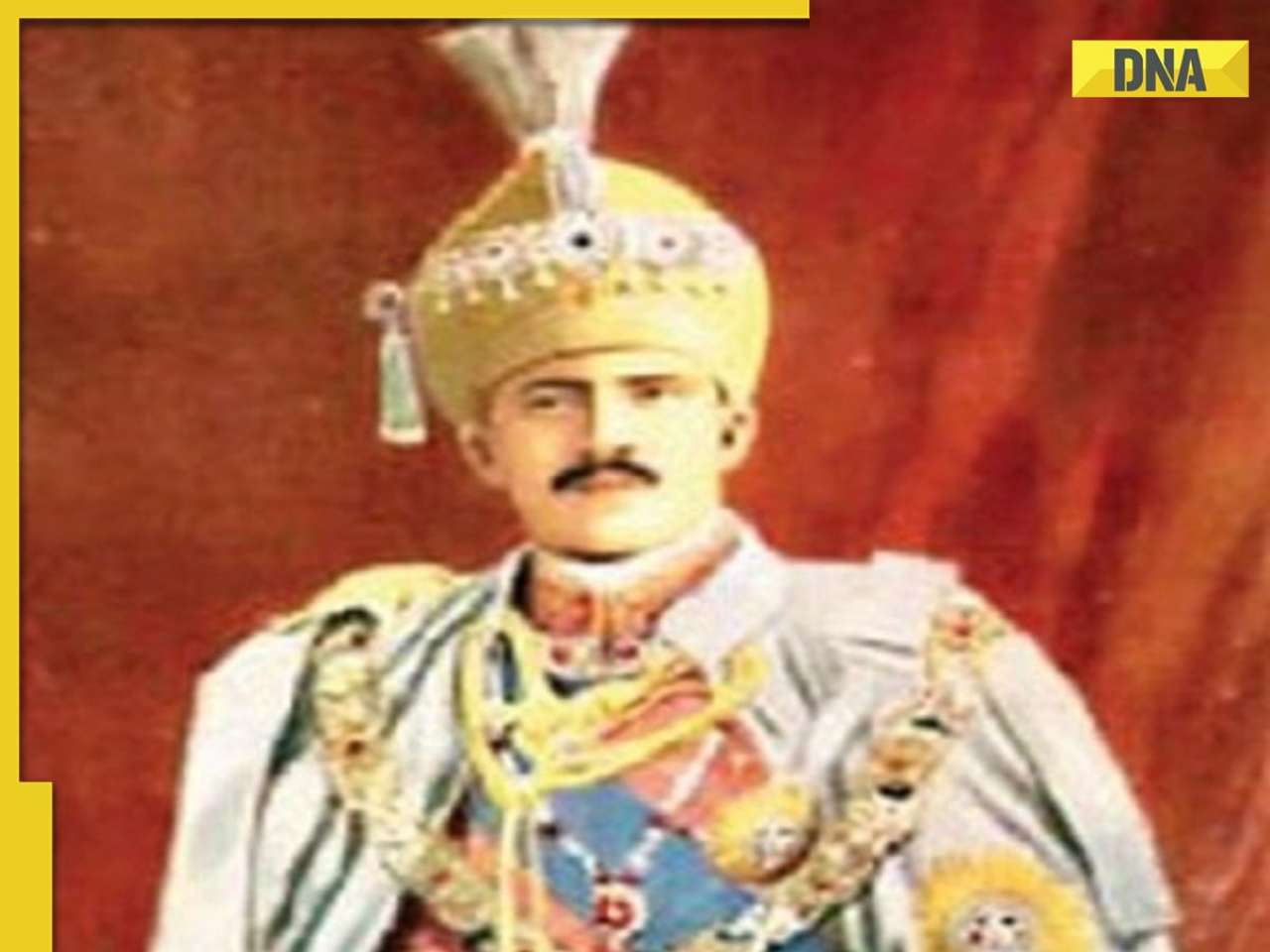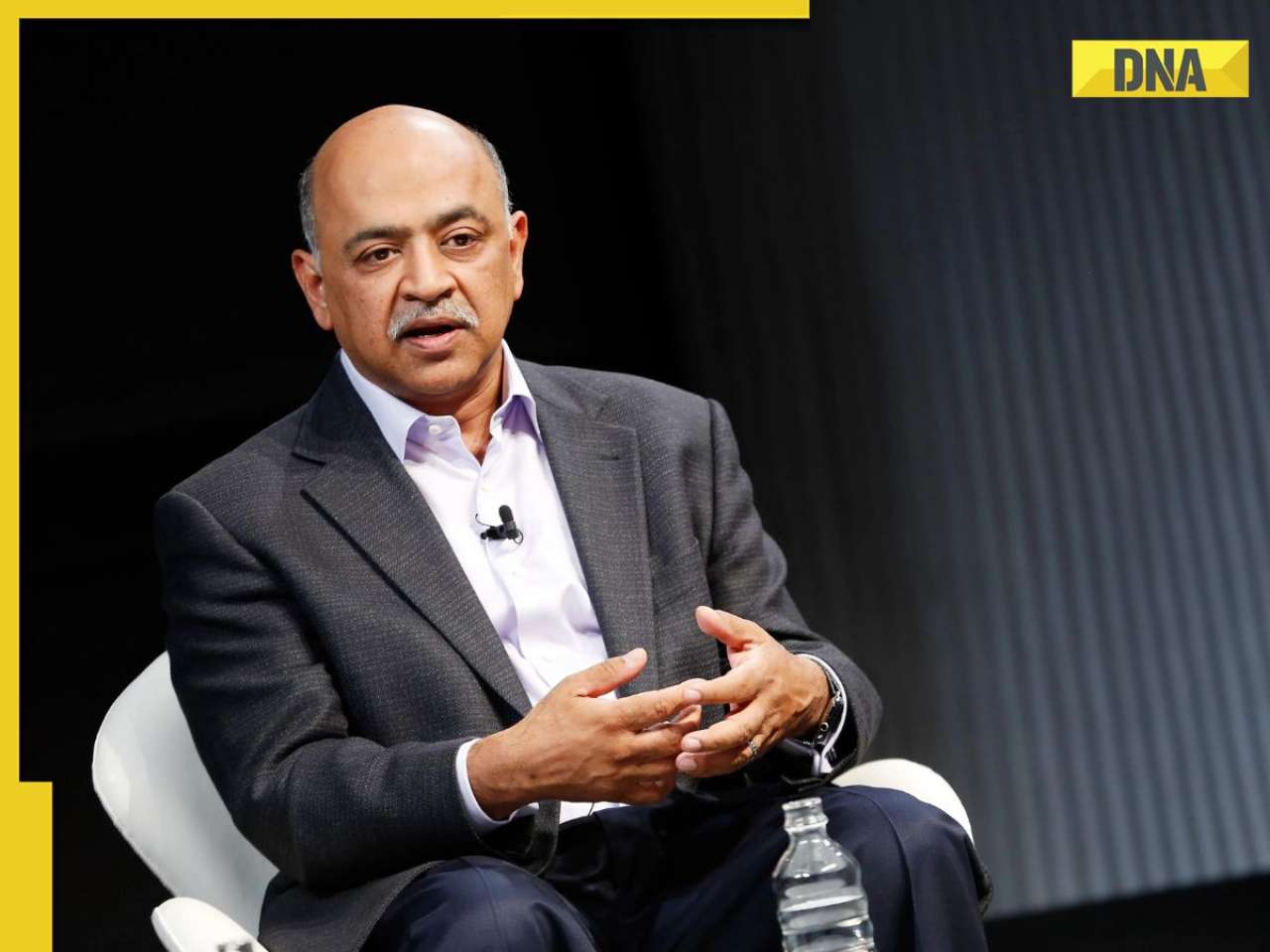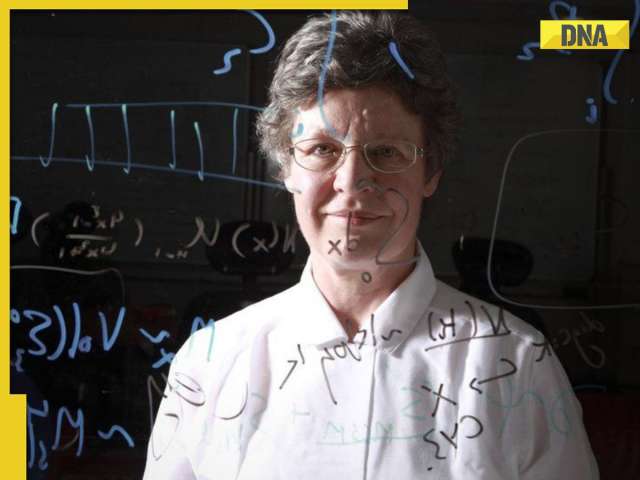Dix (1891-1969) was not known to have been influenced by Asian artists, but in his early years, he was "influenced by Impressionism and Jugendstil, art movements owing a lot to Asian art."
His works may not have Indian or Asian influence, but the brutal honesty and forcefulness of Otto Dix's art can be found in many contemporary works, says art historian Philipp Gutbrod about the great German expressionist.
"I see Dix's influence in artworks by for example George Condo, Nigel Cooke, or Manuel Ocampo. These artists succeed in giving their paintings a maximum impact. They are clearly aware of art history and have studied the masters, but they use their exceptional technique outside of traditional aesthetic norms," Gutbrod, president of New York's Villa Grisebach Auctions Inc, said.
He says that India has a "wonderfully rich" art tradition and young artists are becoming more and more successful on the international art scene.
"Even though the contemporary art world around the globe is becoming increasingly homogeneous, I enjoy seeing clear elements of Indian culture in contemporary Indian art."
Gutbrod has special praise for Indian artists like Tyeb Mehta, Anish Kapoor, Subodh Gupta and Vibha Galhotra.
"Many fascinating and famous artists have emerged from India, for example Tyeb Mehta and Anish Kapoor. Of the younger artists, Subodh Gupta is already well known and I also like Vibha Galhotra, who I think will continue to surprise us in the future with exceptional artworks," he says.
Gutbrod came out a biography of the artist "Otto Dix: The Art of Life" in German and English spanning his eventful life and multifaceted body of work.
Dix (1891-1969) was not known to have been influenced by Asian artists, but in his early years, he was "influenced by Impressionism and Jugendstil, art movements owing a lot to Asian art."
Exhibitions of Dix's works have, however, been held in Mumbai, Bangalore and Chennai.
Gutbrod finds Dix to be an extremely passionate person on every level.
"He absorbed life and created art with all his senses. His outlook on life was truly based on the writings of the philosopher Nietzsche: 'Beyond Good and Evil'. He did not adhere to social norms and did not believe in absolute morals. Still, he did speak up when he saw things that seemed unjust or wrong to him.
"For example, he painted his famous War triptych against the resurgence of a nationalistic movement in Germany at the end of the Weimar Republic, because he believed the truth was not being told about the horrors of war," he says.
Dix fought and drew on the front during World War I in the grip of a Dionysian lust for life. After 1918, he gave this war the most honest face ever bestowed on it by an artist. During the Weimar Republic, Dix proved to be an enfant terrible, a dandy, and an urban sophisticate, but he was also a respected professor.
Driven out of his position by the Nazis just several months after they came to power, then ostracized and threatened, he retreated to Lake Constance, employing broad brushstrokes to forge a new path after 1945.
The book accompanies Dix through his eventful life and his multifaceted oeuvre - from the early self-portraits to the masterpieces of the twenties and the calm, mature work of his later career.
Six years before his death in 1969, Dix had said, "I am a realist. I must see everything. I must experience all of life's abysses for myself."
Gutbrod says this credo is testimony to the artist's uncompromising commitment to even the harshest realism and stood as a guiding principle throughout his life.
![submenu-img]() Men in this Indian village have two wives, living under one roof due to…
Men in this Indian village have two wives, living under one roof due to…![submenu-img]() Meet Allah Ghazanfar, Afghanistan's 18-year-old mystery spinner who destroyed South African batting in 1st ODI
Meet Allah Ghazanfar, Afghanistan's 18-year-old mystery spinner who destroyed South African batting in 1st ODI![submenu-img]() Fired techie LinkedIn post goes viral, shares his 'survival' story after working as Swiggy delivery agent
Fired techie LinkedIn post goes viral, shares his 'survival' story after working as Swiggy delivery agent![submenu-img]() Not Soham Shah, but this actor was leading Tumbbad, took no money, gave two months, then hurled abuses on director for..
Not Soham Shah, but this actor was leading Tumbbad, took no money, gave two months, then hurled abuses on director for..![submenu-img]() IND vs BAN 1st Test: Predicted playing XIs, live streaming, pitch report and weather forecast of Chennai
IND vs BAN 1st Test: Predicted playing XIs, live streaming, pitch report and weather forecast of Chennai![submenu-img]() Bihar के नवादा में दलितों के 80 घर जलाए, दबंगों ने फायरिंग भी की, जमीन विवाद का है मामला
Bihar के नवादा में दलितों के 80 घर जलाए, दबंगों ने फायरिंग भी की, जमीन विवाद का है मामला![submenu-img]() IND vs BAN Pitch Report: तेज गेंदबाज या स्पिनर्स, चेन्नई में किसका चलेगा सिक्का? जानें भारत-बांग्लादेश टेस्ट की पिच रिपोर्ट
IND vs BAN Pitch Report: तेज गेंदबाज या स्पिनर्स, चेन्नई में किसका चलेगा सिक्का? जानें भारत-बांग्लादेश टेस्ट की पिच रिपोर्ट![submenu-img]() Mathura Train Accident: मथुरा में डिरेल हुई मालगाड़ी, Delhi-Agra ट्रैक पर ठप हुआ रेल यातायात, साजिश की आशंका में जांच शुरू
Mathura Train Accident: मथुरा में डिरेल हुई मालगाड़ी, Delhi-Agra ट्रैक पर ठप हुआ रेल यातायात, साजिश की आशंका में जांच शुरू![submenu-img]() होप, रिजेक्शन, फिर Swiggy बनी सहारा... दिल छू लेगी इस सॉफ्टवेयर इंजीनियर की कहानी
होप, रिजेक्शन, फिर Swiggy बनी सहारा... दिल छू लेगी इस सॉफ्टवेयर इंजीनियर की कहानी![submenu-img]() Lebanon Device Explosion: खतरनाक है इजरायल की सीक्रेट एजेंसी मोसाद, जानें 5 ऐसे खुफिया ऑपरेशन, जो आपके होश उड़ा देंगे
Lebanon Device Explosion: खतरनाक है इजरायल की सीक्रेट एजेंसी मोसाद, जानें 5 ऐसे खुफिया ऑपरेशन, जो आपके होश उड़ा देंगे![submenu-img]() Ford to return to India after 2 years with reopening of....
Ford to return to India after 2 years with reopening of....![submenu-img]() Maruti Suzuki launches new Swift CNG, check price, mileage, other features
Maruti Suzuki launches new Swift CNG, check price, mileage, other features![submenu-img]() ‘30 LPA, 3BHK, no in-laws’: Woman earning Rs 1.32 lakh salary lists demands for future husband, netizens say...
‘30 LPA, 3BHK, no in-laws’: Woman earning Rs 1.32 lakh salary lists demands for future husband, netizens say...![submenu-img]() In a big EV push, Centre launches Rs 10900 crore PM E-Drive scheme to replace…
In a big EV push, Centre launches Rs 10900 crore PM E-Drive scheme to replace…![submenu-img]() World’s longest car has helipad, swimming pool, mini-golf course, can seat over…; it cost…
World’s longest car has helipad, swimming pool, mini-golf course, can seat over…; it cost…![submenu-img]() Meet man, who secured record-breaking package, not from IIT, IIM, NIT, his salary is...
Meet man, who secured record-breaking package, not from IIT, IIM, NIT, his salary is...![submenu-img]() Meet India's first billionaire, who controlled 25% of world's GDP, had 50 Rolls-Royce, way richer than Mukesh Ambani
Meet India's first billionaire, who controlled 25% of world's GDP, had 50 Rolls-Royce, way richer than Mukesh Ambani![submenu-img]() IAS vs IPS: Who earns more? Differences in power, role, responsibilities
IAS vs IPS: Who earns more? Differences in power, role, responsibilities![submenu-img]() Meet boy who got record-breaking salary package from Google, was former Amazon employee, not from IIT, IIM…
Meet boy who got record-breaking salary package from Google, was former Amazon employee, not from IIT, IIM…![submenu-img]() Meet man who became IPS, then cracked UPSC to become IAS officer with AIR 52, is now DM of...
Meet man who became IPS, then cracked UPSC to become IAS officer with AIR 52, is now DM of...![submenu-img]() Delhi New CM: Why Delhi CM Atishi Marlena Singh Dropped Her Middle Name, Fascinating Story Behind It
Delhi New CM: Why Delhi CM Atishi Marlena Singh Dropped Her Middle Name, Fascinating Story Behind It![submenu-img]() Haryana Assembly Election 2024: Congress Announces Seven Guarantees, Check Full List Here I Politics
Haryana Assembly Election 2024: Congress Announces Seven Guarantees, Check Full List Here I Politics![submenu-img]() Lebanon Pager Explosion Update: 8 Killed, 2,750 Injured; Hezbollah Blames Israel For Pager Attack
Lebanon Pager Explosion Update: 8 Killed, 2,750 Injured; Hezbollah Blames Israel For Pager Attack![submenu-img]() Pakistani Intruder Shot Dead By BSF Along International Border In Amritsar, Punjab
Pakistani Intruder Shot Dead By BSF Along International Border In Amritsar, Punjab![submenu-img]() Kolkata Doctor Case: Protesting Doctors React After CBI Arrests Sandip Ghosh And Abhijit Mondal
Kolkata Doctor Case: Protesting Doctors React After CBI Arrests Sandip Ghosh And Abhijit Mondal![submenu-img]() Gautam Adani breaks silence on reports of Kenya Airport Authority accepting his company's proposal in 17 days
Gautam Adani breaks silence on reports of Kenya Airport Authority accepting his company's proposal in 17 days![submenu-img]() Mukesh Ambani's gift for Reliance customers, 1-year Jio AirFiber connection for free but on one condition
Mukesh Ambani's gift for Reliance customers, 1-year Jio AirFiber connection for free but on one condition![submenu-img]() Deepika Padukone buys 1845 sq ft apartment near her mother-in-law's house in Mumbai, it worth Rs...
Deepika Padukone buys 1845 sq ft apartment near her mother-in-law's house in Mumbai, it worth Rs...![submenu-img]() Meet man, who got Rs 30 crore salary hike, leads Rs 1572 crore company that once offered job to Ratan Tata, he is...
Meet man, who got Rs 30 crore salary hike, leads Rs 1572 crore company that once offered job to Ratan Tata, he is...![submenu-img]() Mukesh Ambani buys India’s first Boeing 737 MAX 9, it’s priced over Rs…
Mukesh Ambani buys India’s first Boeing 737 MAX 9, it’s priced over Rs…![submenu-img]() Meet actor who became superstar with blockbuster debut, signed 47 films in 11 days; never gave another hit, is now...
Meet actor who became superstar with blockbuster debut, signed 47 films in 11 days; never gave another hit, is now...![submenu-img]() 7 unsung women scientists whose discoveries changed the world
7 unsung women scientists whose discoveries changed the world![submenu-img]() This controversial film was banned during Emergency, prints were burnt, was reshot but...
This controversial film was banned during Emergency, prints were burnt, was reshot but...![submenu-img]() 10 amazing images captured by Hubble Space Telescope
10 amazing images captured by Hubble Space Telescope![submenu-img]() From Kilimanjaro National Park to Aldabra Atoll: 7 UNESCO world heritage sites that have high entry fees
From Kilimanjaro National Park to Aldabra Atoll: 7 UNESCO world heritage sites that have high entry fees![submenu-img]() Mpox Scare: Man tests positive in Kerala after returning from...
Mpox Scare: Man tests positive in Kerala after returning from...![submenu-img]() Indus Water Treaty: India serves formal notice to Pakistan, seeking...
Indus Water Treaty: India serves formal notice to Pakistan, seeking...![submenu-img]() 'One Nation, One Election' approved by Centre: What it means for India's election system?
'One Nation, One Election' approved by Centre: What it means for India's election system?![submenu-img]() Kolkata doctor rape-murder case: TMC MP Abhishek Banerjee demands CBI's..., says...
Kolkata doctor rape-murder case: TMC MP Abhishek Banerjee demands CBI's..., says...![submenu-img]() Union Cabinet approves 'One Nation, One Election' proposal, Bill likely in winter session
Union Cabinet approves 'One Nation, One Election' proposal, Bill likely in winter session















































)
)
)
)
)
)
)
)
)
)
)
)
)
)





)
)
)
)
)
)